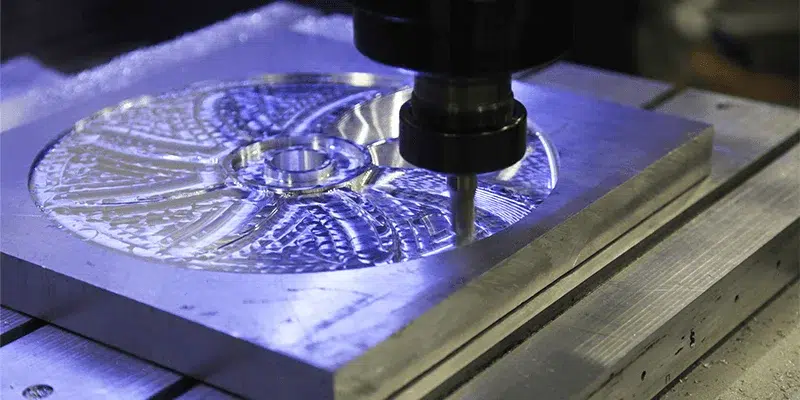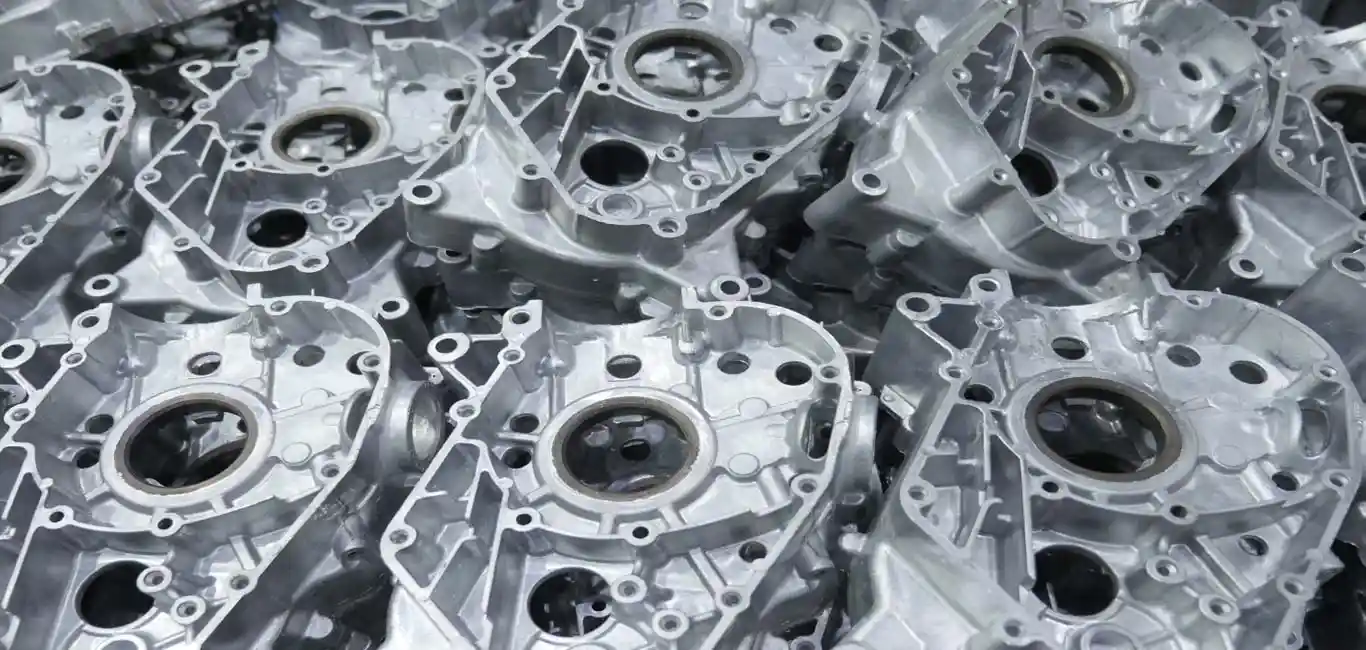Legacy and growth of aluminum casting
Understanding the Procedures Included in Aluminum Casting for High-Quality Production
The aluminum casting process is a complicated yet necessary treatment for accomplishing top quality production. It involves numerous stages, consisting of mold and mildew prep work, melting, putting, and cooling. Each action needs cautious attention to information to guarantee and avoid flaws consistency. Comprehending these treatments can substantially affect the end product's integrity. As one analyzes the nuances of mold selection and air conditioning strategies, the importance of each aspect becomes increasingly clear. What factors genuinely determine success in this elaborate procedure?

The Aluminum Casting Process Summary
The aluminum casting procedure is a commonly made use of production method that changes liquified aluminum right into numerous shapes and components. This procedure begins by heating up aluminum until it reaches a fluid state, enabling it to flow quickly into molds. Depending on the preferred output, different casting methods can be employed, including sand casting, die casting, and investment casting. Each technique has its one-of-a-kind benefits and applications, influencing elements such as production volume, dimensional accuracy, and surface area coating.
When the aluminum is poured into the mold and mildew, it cools and solidifies, handling the shape of the cavity. After cooling down, the actors piece is eliminated from the mold, usually calling for added procedures like trimming, machining, or surface therapy to achieve the final specifications. In general, the aluminum casting process is important in creating complex and durable parts for different markets, consisting of automotive, aerospace, and customer products.
Preparing the Mold for Casting

Careful prep work additionally involves cleaning up the mold and mildew to eliminate any type of pollutants that might impact the casting procedure. A complete evaluation assurances that all parts mesh correctly, protecting against misalignments during pouring. Furthermore, using a launch representative can help ease the elimination of the finished item.
Inevitably, meticulous focus to information throughout mold prep work establishes the foundation for an effective casting procedure, influencing factors such as dimensional accuracy and surface area high quality of the aluminum parts produced.
Pouring and thawing Aluminum
Reliable melting and putting of aluminum is crucial for achieving high-grade castings. The process starts by selecting the proper heater, which ought to supply efficient heat transfer and maintain regular temperatures. Different sorts of heating systems, such as induction or crucible heating systems, can be made use of based upon production demands and volume.
The aluminum needs to be warmed to its melting point, commonly around 660 levels Celsius (1220 degrees Fahrenheit), while making certain marginal oxidation and contamination. To enhance quality, ingredients may be introduced to enhance fluidity and minimize contaminations. Once totally melted, the aluminum should be held at a steady temperature level prior to pouring.
Pouring calls for accuracy to prevent flaws such as air pockets or inclusions. The use of putting ladles and controlled putting strategies adds to a smooth circulation right into the mold. Correct execution of these actions is vital for generating spreadings with maximum structural honesty and surface area finish.
Air Conditioning and Solidification Methods
After pouring, the cooling and solidification of aluminum play an important function in establishing the last buildings of the casting (Aluminum Foundry). Effective cooling methods directly affect the microstructure, mechanical residential properties, and dimensional accuracy of the final product. Usual approaches consist of compelled air cooling and water spray, which advertise consistent temperature circulation and reduce thermal gradients
The solidification process begins as the liquified aluminum loses warmth, shifting from liquid to solid. The rate of cooling this website down impacts grain dimension; slower air conditioning can bring about bigger grains, possibly reducing stamina. In addition, using cools-- steel inserts that absorb warm-- can boost cooling prices in particular areas, improving general honesty.
Controlled cooling down systems are usually applied to attain wanted residential or commercial properties, such as improved ductility or toughness, by handling the air conditioning contour. Appropriate techniques guarantee dependable aluminum castings that fulfill strict market criteria.
Completing and High Quality Control Measures
Completing and quality assurance procedures are vital to guarantee that aluminum castings meet the required specs and efficiency criteria. After the casting process, components undertake various completing operations, consisting of machining, grinding, and polishing. These procedures boost surface area quality, dimensional accuracy, and general appearances.
Quality control steps play a pivotal duty in ensuring item stability. Evaluation methods such as aesthetic analyses, dimensional checks, and non-destructive screening are employed to identify problems like porosity, surface area irregularities, or dimensional errors. Furthermore, detailed documentation of each stage of production aids map any type of issues back to their resource, making it possible for continuous renovation.
Employing analytical process control (copyright) more assurances that manufacturing procedures stay within defined restrictions, improving consistency and reliability. By incorporating completing techniques and stringent quality control measures, producers can achieve top quality aluminum spreadings that fulfill both industry criteria and client assumptions.
Frequently Asked Questions
What Sorts Of Aluminum Alloys Are Ideal for Casting?
The most effective aluminum alloys for casting consist of 319, 356, and 413, recognized for their superb fluidity, deterioration resistance, and stamina - aluminum casting. These alloys are frequently made use of in automobile, aerospace, and different commercial applications for sturdy elements
Just How Does Temperature Affect Aluminum Casting High Quality?
Temperature substantially affects aluminum casting quality; greater temperature levels can enhance fluidity however might result in oxidation, while reduced temperatures boost detail however rise viscosity. Achieving excellent temperature levels is necessary for stabilizing these opposite effects during casting.
What Prevail Flaws in Aluminum Castings?
Common issues in aluminum additional reading spreadings include porosity, shrinking, inclusions, cool shuts, and surface roughness. These problems develop from factors such as incorrect temperature level control, contamination, and inadequate mold and mildew layout, influencing the final item's integrity and performance.
Can Aluminum Casting Be Reused?

Exactly How Does Aluminum Casting Contrast to Various Other Manufacturing Approaches?
Aluminum casting offers exceptional layout flexibility and material performance compared to methods like forging or machining. Precision aluminum casting. Its capability to create detailed forms minimizes waste, enhancing general production my latest blog post performance while preserving high-quality requirements in completed products
The aluminum casting process is a facility yet necessary treatment for achieving high-grade production. The aluminum casting procedure is an extensively made use of production technique that changes liquified aluminum right into various shapes and parts. Preparing the mold and mildew for casting is an essential step that straight impacts the top quality of the final aluminum item. Finishing and high quality control actions are important to ensure that aluminum castings fulfill the needed specs and efficiency standards. Temperature level greatly influences aluminum casting high quality; greater temperatures can boost fluidness but may lead to oxidation, while lower temperatures improve detail however boost thickness.